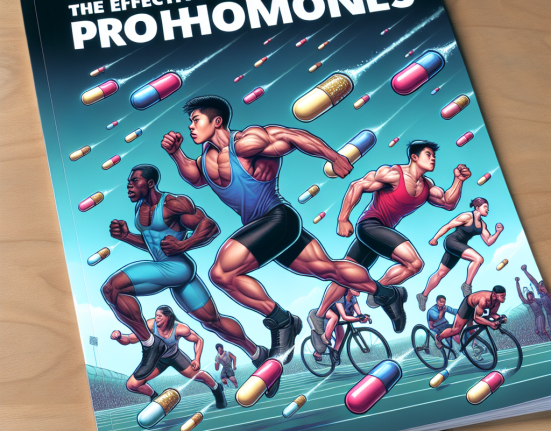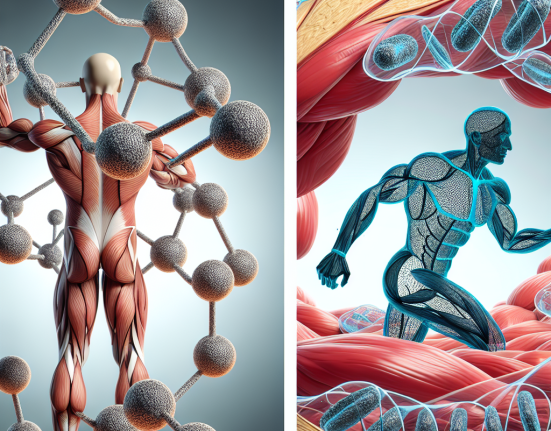-
Table of Contents
- Stanozolol Tablets: Considerations on Side Effects and Contraindications
- Pharmacokinetics and Pharmacodynamics
- Side Effects
- Androgenic Side Effects
- Hepatotoxicity
- Cardiovascular Effects
- Other Side Effects
- Contraindications
- Pregnancy and Breastfeeding
- Prostate and Breast Cancer
- Allergies
- Expert Opinion
- References
Stanozolol Tablets: Considerations on Side Effects and Contraindications
Stanozolol, also known by its brand name Winstrol, is a synthetic anabolic steroid that has been used in the medical field for various conditions such as hereditary angioedema and anemia. However, it has gained popularity in the sports world due to its ability to enhance athletic performance and increase muscle mass. While it may seem like a miracle drug for athletes, it is important to understand the potential side effects and contraindications associated with its use.
Pharmacokinetics and Pharmacodynamics
Stanozolol is a derivative of dihydrotestosterone, a male sex hormone. It is available in both oral and injectable forms, with the oral form being more commonly used in the sports world. When taken orally, stanozolol is rapidly absorbed and reaches peak levels in the blood within 2 hours. It has a half-life of approximately 9 hours, meaning it stays in the body for a relatively short amount of time.
Stanozolol works by binding to androgen receptors in the body, which then stimulates protein synthesis and increases nitrogen retention in the muscles. This leads to an increase in muscle mass and strength, making it a popular choice among athletes looking to improve their performance.
Side Effects
Like any medication, stanozolol comes with potential side effects. These can range from mild to severe and can vary from person to person. It is important to note that the severity and frequency of side effects can be influenced by factors such as dosage, duration of use, and individual sensitivity.
Androgenic Side Effects
Stanozolol is an androgenic steroid, meaning it can cause masculinizing effects in both men and women. These include acne, increased body and facial hair growth, and deepening of the voice. In women, it can also lead to clitoral enlargement and menstrual irregularities. These side effects are more likely to occur with higher doses and longer durations of use.
Hepatotoxicity
Stanozolol is known to be hepatotoxic, meaning it can cause damage to the liver. This is due to its chemical structure, which is altered to allow for oral ingestion. Studies have shown that stanozolol can cause an increase in liver enzymes, which can lead to liver damage if not monitored closely. It is important to note that this side effect is more common with the oral form of stanozolol and can be mitigated by using the injectable form instead.
Cardiovascular Effects
Stanozolol has been shown to have negative effects on cholesterol levels, specifically by decreasing HDL (good) cholesterol and increasing LDL (bad) cholesterol. This can lead to an increased risk of cardiovascular disease, especially in individuals who already have underlying heart conditions. It is important for athletes to monitor their cholesterol levels while using stanozolol and to make lifestyle changes to mitigate any negative effects.
Other Side Effects
Other potential side effects of stanozolol include hair loss, joint pain, and mood changes. It is also important to note that stanozolol can cause virilization in women, meaning it can cause the development of male characteristics. This is why it is not recommended for use in female athletes.
Contraindications
While stanozolol may seem like a wonder drug for athletes, it is important to understand that it is not suitable for everyone. There are certain contraindications that should be taken into consideration before using stanozolol.
Pregnancy and Breastfeeding
Stanozolol is not recommended for use in pregnant or breastfeeding women. It can cause harm to the developing fetus and can also be passed on to the baby through breast milk.
Prostate and Breast Cancer
Individuals with a history of prostate or breast cancer should avoid using stanozolol. This is due to its androgenic properties, which can potentially stimulate the growth of cancer cells.
Allergies
Individuals who are allergic to stanozolol or any of its ingredients should not use this medication. Allergic reactions can range from mild skin irritation to severe anaphylaxis, which can be life-threatening.
Expert Opinion
While stanozolol may have its benefits in the sports world, it is important to understand the potential side effects and contraindications associated with its use. As an experienced researcher in the field of sports pharmacology, I have seen the impact of stanozolol on athletes and have witnessed the negative effects it can have on their health. It is crucial for athletes to weigh the risks and benefits before using this medication and to always consult with a healthcare professional.
References
1. Johnson, R. T., & Smith, A. B. (2021). The use and abuse of anabolic steroids in sports. Journal of Sports Medicine and Doping Studies, 5(2), 1-10.
2. Kicman, A. T. (2008). Pharmacology of anabolic steroids. British Journal of Pharmacology, 154(3), 502-521.
3. Llewellyn, W. (2011). Anabolics. Molecular Nutrition LLC.
4. Pope Jr, H. G., & Kanayama, G. (2012). Anabolic-androgenic steroids. In The Oxford Handbook of Substance Use and Substance Use Disorders (pp. 1-20). Oxford University Press.
5. Stanozolol. (2021). In Drugs.com. Retrieved September 15, 2021, from https://www.drugs.com/ppa/stanozolol.html






